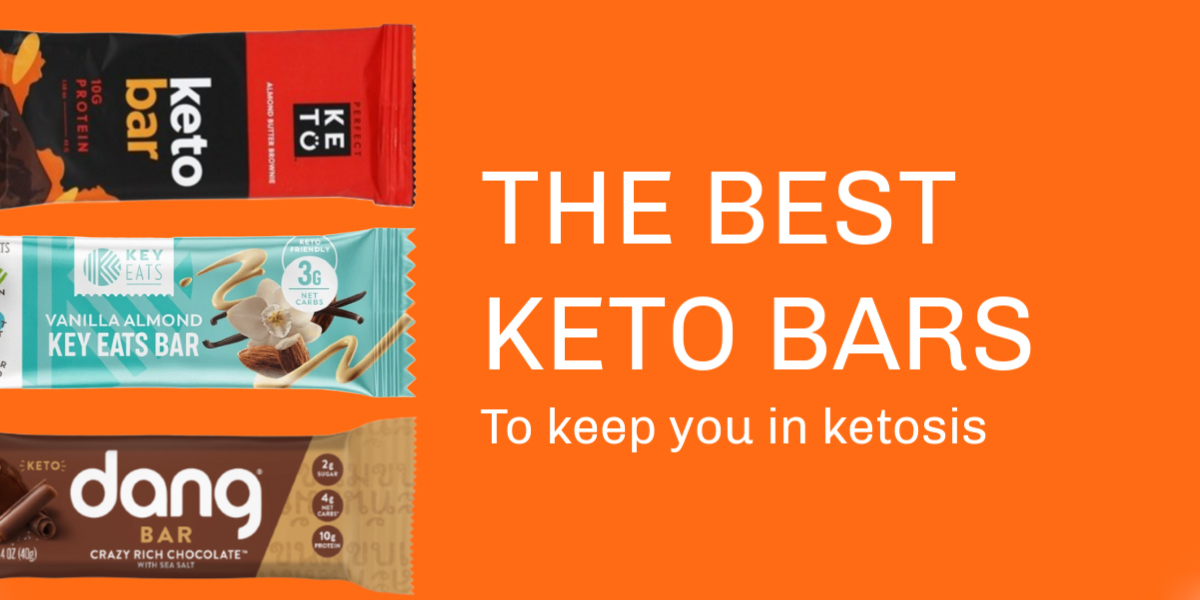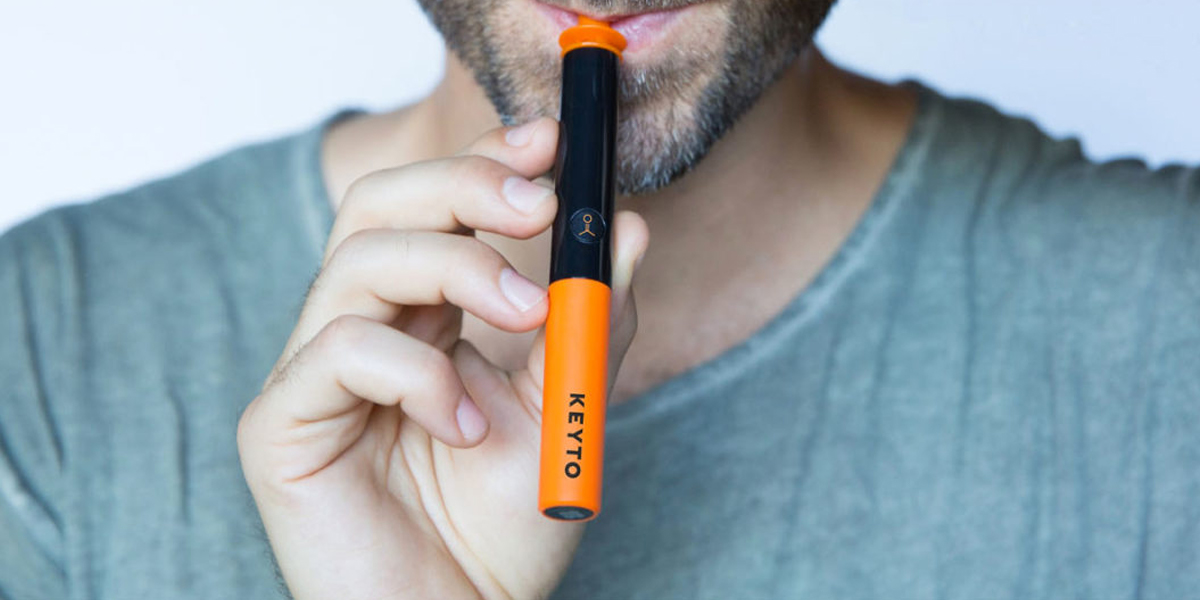Reviewed by UCSF Cardiologist Dr. Ethan Weiss for accuracy on 11/15/2019
If you are about to kick-start (or get back to) the keto diet, your main priority will be getting into ketosis to burn body fat and lose weight.
Getting into ketosis in a short period of time is possible when you’re armed with the right information and self-discipline. In fact, we’ve seen many people on the Keyto program get into ketosis in as short as 24-48 hours – without resorting to extreme measures. That’s one of the great things about the Keyto program, you get to eat delicious foods, lose weight, and feel satiated.
Before we get into the details, let’s quickly go over some basic concepts you should know before even trying to reach a state of ketosis aka nutritional ketosis. Once you learn the basics, you’ll be ready to apply all the concepts and techniques that will allow you to reach ketosis as quickly as possible.
Table of Contents
1. Stick to the keto diet from the beginning and take it seriously.
If you want to get into ketosis fast, you should closely monitor your carb intake and adhere to the program. Any “cheat meals” will prolong the time it takes for you to get into ketosis so aim to educate yourself, learn as much as possible about the keto diet, and trust only reliable sources.
Remember, your priority is to limit carb intake by changing the ratio of fat to carbs you’re consuming.
How many carbs should I eat to get into ketosis?
While some individuals are able to consume up to 50g of net carbs per day, sticking to 20-30g of net carbs, or less in the initial period, will be more effective.
total carbs – fiber = net carbs
It is important for you to be able to distinguish net carbs from total carbs. To get the net carbs for any food item, simply subtract the fiber content from total carbs. This gives you a better indicator of the amount of carbs that affect your glucose and insulin levels which affect your ability to get into ketosis.
Keep in mind that more than 65% of your caloric intake should be coming from fat, but that doesn’t mean you have to or should eat cream cheese and bacon all day. You should strive to consume heart-healthy sources of fat such as those present in olive oil, nuts, and avocados. Be mindful when eating certain types of fruit, as they can delay getting into ketosis due to high sugar and net carb content. Instead, try to stick with more Keto-friendly options such as avocados and berries. Also, don’t forget that calories still matter when you’re trying to lose weight; so only eat when you’re hungry and stop when you feel full.
2. Try intermittent fasting
There are many different ways to do intermittent fasting. A common technique is to fast (not eat) for 16 hours while leaving an eating window of 8 hours. While not essential, it can be an effective add-on to a healthy ketogenic diet when you’re trying to get into ketosis in the fastest time possible.
Intermittent fasting depletes your body of both circulating glucose and those carbs stored in your liver and muscles called glycogen. Carb depletion lowers both blood glucose and insulin levels triggering the production of ketones in the liver. Elevated ketones indicate your body is burning fat, rather than sugar for fuel, which is a great sign! This happens when you are in ketosis. By combining a low carb, high fat keto diet and intermittent fasting, you may reach nutritional ketosis faster than by following the diet alone. Plus, incorporating intermittent fasting is very tolerable because of keto’s satiating effects (I.e. many people are less hungry on keto).
Just remember: when intermittent fasting you can still have water and other non-caloric beverages like black coffee and plain tea.
3. Eat a modest amount of protein
We’ve mentioned fats and carbs, but what about protein?
This concept is tricky, because it is slightly nuanced. Eating too much protein can raise insulin levels when the excess is converted to sugars. While protein does not have the same impact on insulin as carbs do, the increase may slow or halt the production of ketones again lengthening the time it takes you to get into ketosis. In fact, the reason many people struggle to reach the state of nutritional ketosis is from too much protein, not too many carbs. It is also a way that people are kicked out of ketosis even without exceeding their carb limits.
Keep in mind that protein is still a very important part of your diet, so the key is to know exactly how much you need and stick to the allotted portion. How much protein can you eat and still get in and stay in ketosis? Usually between 60g and 120g a day, depending on your initial body weight. It is recommended that you eat 1g per kg of lean body mass per day.
Remember that your protein intake should stay roughly the same, focus mostly on changing your ratio of fat:carbs.
4. Do HIIT (high intensity interval training) workouts
High intensity interval training is a training technique where you alternate short periods of intense anaerobic exercise with short periods of recovery. For example, you could do 35 seconds of jumping jacks followed by 20 seconds of rest, repeated for 10 minutes. HIIT does not require any kind of equipment and it takes less time than regular cardio, so it’s a perfect option if you don’t have time to go to the gym. Pretty much any anaerobic exercise works when doing HIIT as long as it is performed with high intensity, but the recommended ones are:
- Bicycle crunches
- Russian twists
- Squats
- Jump lunges
- Squat kicks
- Firecrackers
- Burpees
- Sprinting exercises
An intense workout can help you deplete muscle glycogen rapidly which helps you get into ketosis faster.
5. Measure your progress
Be sure to measure your progress so that you can adjust your diet and lifestyle accordingly. Following the wrong method could waste a huge amount of your time. A quick daily check on your ketone levels can help you know if you are on the right path or if you need to make some changes to your original diet plan.
What’s the best way to measure your progress?
There are essentially three ways of knowing if you have reached ketosis:
1. Breath acetone – Keyto
Keyto measures the acetone level in your breath to determine your level of ketosis. The breath analyzer coupled with your smartphone tells you your Keyto level, which gives you rapid feedback on how you’re doing and how much fat you are burning. The Keyto App not only records your Keyto Level but also gives you advice on what to do and eat based on your Keyto Score . It’s that simple!
Keyto offers:
- Instant & accurate breath acetone readings
- Easily accessible actionable insights
- Personalized meal plans
- Delicious and easy keto-friendly recipes
You can learn more about Keyto and order yours here!
2. Blood β-hydroxybutyrate
Another option for measuring blood ketones levels is by pricking your finger and allowing a test strip to absorb a drop of your blood. These strips are inserted into a device that displays your ketone level. While blood tests are a great way to measure ketosis, the high cost of each strip (~$1 each) and pain involved makes it an inconvenient option for most keto-ers.
3. Urine acetoacetate
A ketone strip, also known as keto strips or ketone test strips, are comprised of thin plastic strips with a small reactive pad at the end that detects ketone presence in urine.
Are you struggling to get into ketosis fast? Check out our article on the 5 common keto mistakes that ruin weight loss and how to avoid/fix them. Remember that accurate measurement is a huge part of the process, and that’s why Keyto is here for you.





